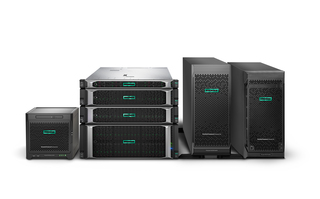HPE Ups Its Management Game With Expansion Of InfoSight To Cover Server Environments

Hewlett Packard Enterprise has followed up on a promise to take its HPE InfoSight cloud-based artificial intelligence management tool beyond its original storage focus with the introduction of an expansion of the technology to the company's server business.
HPE Thursday said it is extending its HPE InfoSight management platform to the company's ProLiant servers, Synergy compute modules and Apollo servers, said Bill Philbin, HPE's senior vice president and global chief technology officer for Hybrid IT.
"This allows us to differentiate our server offerings from others out there," said Philbin. "As we take this into the portfolio and we look at combining server and storage together in a virtualized environment, the customer is going to get net-net a better experience on HPE than anywhere else."
[Related: 9 Things Partners Need To Know About HPE's $1B Acquisition Of Nimble Storage]
By bringing HPE InfoSight management capabilities to its servers, the Palo Alto, Calif.-based vendor will provide improved visibility into the health and status of customers' servers, and give them predictive analytics to help reduce maintenance issues while improving security by monitoring attempted rogue login attempts, Philbin said.
HPE InfoSight came with HPE's 2017 acquisition of storage vendor Nimble, developer of the InfoSight technology. HPE CEO Antonio Neri at the time promised to bring InfoSight to a wider range of HPE offerings.
HPE in July extended InfoSight to its flagship 3Par storage line.
For HPE, the move to take InfoSight capabilities to its server lines was logical, Philbin said.
"The reason we started with servers after storage is servers are the basic building block for all of the other solutions we are providing," he said. "Whether it is Synergy or converged storage solutions around SAP HANA, SimpliVity—all of those solutions build upon the basic server building blocks.”
HPE InfoSight on HPE servers will help solution providers change the conversations they are having with customers, Philbin said.
Customers want to talk less about speeds and feeds and more about delving into capabilities and service- level agreements, he said.
"This allows us to have a much richer conversation with the customer around guaranteeing application uptime availability," he said. "With InfoSight, we can look at what is going on in your IT shop and then compare that result to everyone else using a similar environment and application. We can benchmark whether or not customers are achieving and receiving the maximum results."
In addition to working in HPE storage and server environments, HPE InfoSight may be extended to non-HPE environments, Philbin said.
HPE and its peers support an API (Application Programming Interface) called Red Fish, which Philbin said is a standard RESTful API for managing scale-out servers.
"What Red Fish allows you to do is to interrogate any platform that supports Red Fish," he said. "Dell is involved in the Red Fish initiative along with us and a host of other people. Given the fact that people are starting to talk about Red Fish, we can then bring in heterogenous information and start to use that to inform our customers."
Philbin said solution providers can take a few steps to be ready to bring InfoSight to customers, starting with making it a part of every storage and server conversation, followed by getting InfoSight deployed in customers' infrastructures to improve their user experiences.
“Talk about AI and InfoSight at every sale, make sure the telemetry is coming home and become well versed in InfoSight," he said. "It is a way for partners to make their customers more successful because it gives them information the customer may or may not know they have. It allows partners to be more proactive in customer environments."
HPE's expansion of InfoSight to improve management of server environments is a move that makes complete sense, said Dan Molina, chief technology officer at Nth Generation Computing, a San Diego-based solution provider and longtime HPE channel partner.
InfoSight's powerful AI-based technology helps pinpoint problems with applications and storage by looking at the application, virtualization and storage layers, Molina told CRN.
"Adding the server element to the stack will complete the visibility needed to manage the data center," he said.
HPE InfoSight can also be combined with HPE's OneView management software to do server management in a safer fashion than before, Molina said. OneView already dramatically reduces management issues, he said.
"If you combine OneView with InfoSight with its new server elements, it becomes an even more powerful management capability," he said.
HPE InfoSight on ProLiant server, Synergy compute modules and Apollo systems—which require a software subscription—will be available starting in January 2019.